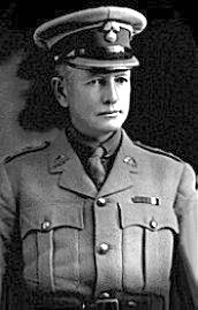
Maj. Richard Lewis Hay Blake JENKINS
Clicking on Photo will return to Page H,I,J
|
JENKINS
Major Richard Lewis Hay Blake (Queen's
South Africa Medal & 3 Clasps. King's South Africa Medal & 2 Clasps)
20th Battalion, Australian Imperial Force
Born 1866, in 'Nepean Towers', Douglas Park, NSW
[Birth certificate: 1866 13805 Picton, NSW]
Educated: King's School, Parramatta & Sydney Grammar School, NSW
Occupation: Farmer / Regular Soldier of Australian and Imperial Forces,
of Care of J.C. Bragg, 76 Pitt Street, Sydney, NSW / Belmont, Hornsby,
NSW.
Next Of Kin: Wife; Blanche E. Jenkins (nee Brown) of Care of J.C. Bragg,
76 Pitt Street, Sydney, NSW / Belmont, Hornsby, NSW.
Photos of Major Jenkins are known to exist in the following locations:
Sydney Morning Herald 29 Jan 1916 p10. Burial service: Sydney
Town & Country Journal 29 Mar 1916 p32 |
